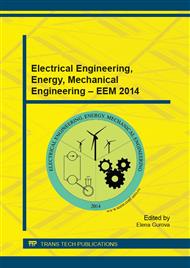p.333
p.339
p.345
p.351
p.355
p.360
p.364
p.369
p.374
Study of the Temperature Effect on the Structure and Thickness of Hot-Dip Zinc Coatings on Fixing Products
Abstract:
Hot-dip galvanizing of steels is usually performed by immersing the metal in a bath with molten zinc in the temperature range from 450 to 460 °C. In some cases it is necessary to obtain a minimal coating thickness. For example, high-strength bolts and other fixing products require a minimal thickness of the coating because a too thick zinc coating requires additional work on re-threading, which leads to spalling of coatings, a loss of corrosion resistance and, consequently, failure of the entire product. The main aim of this work was to study the influence of elevated temperatures of hot-dip galvanizing on the thickness and microstructure of zinc coatings on bolts and nut preform. The microstructure and elemental composition of the coating were studied by scanning electron microscopy and energy dispersion X-ray microanalysis. It was found that the coating thickness obtained in the range between 475 and 535°C decreases with temperature and reaches a minimum at 535°C. The structure of the coating after high-temperature hot-dip galvanizing was fundamentally different from the structure of the coating made at standard temperatures 450-460°C. This coating formed at 535°C was dense, homogeneous, non-porous and composed of a mixture of the δ and ζ-phases without distinct phase boundaries. That’s why it was recommended to maintain the bath temperature in the range between 533°C and 537°C. It allows us to obtain a hot-dip galvanized coating of a minimal thickness and a good quality on fixing products.
Info:
Periodical:
Pages:
355-359
Citation:
Online since:
December 2014
Authors:
Price:
Сopyright:
© 2015 Trans Tech Publications Ltd. All Rights Reserved
Share:
Citation:


